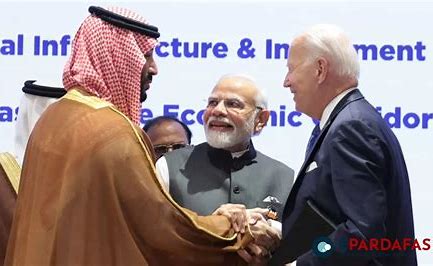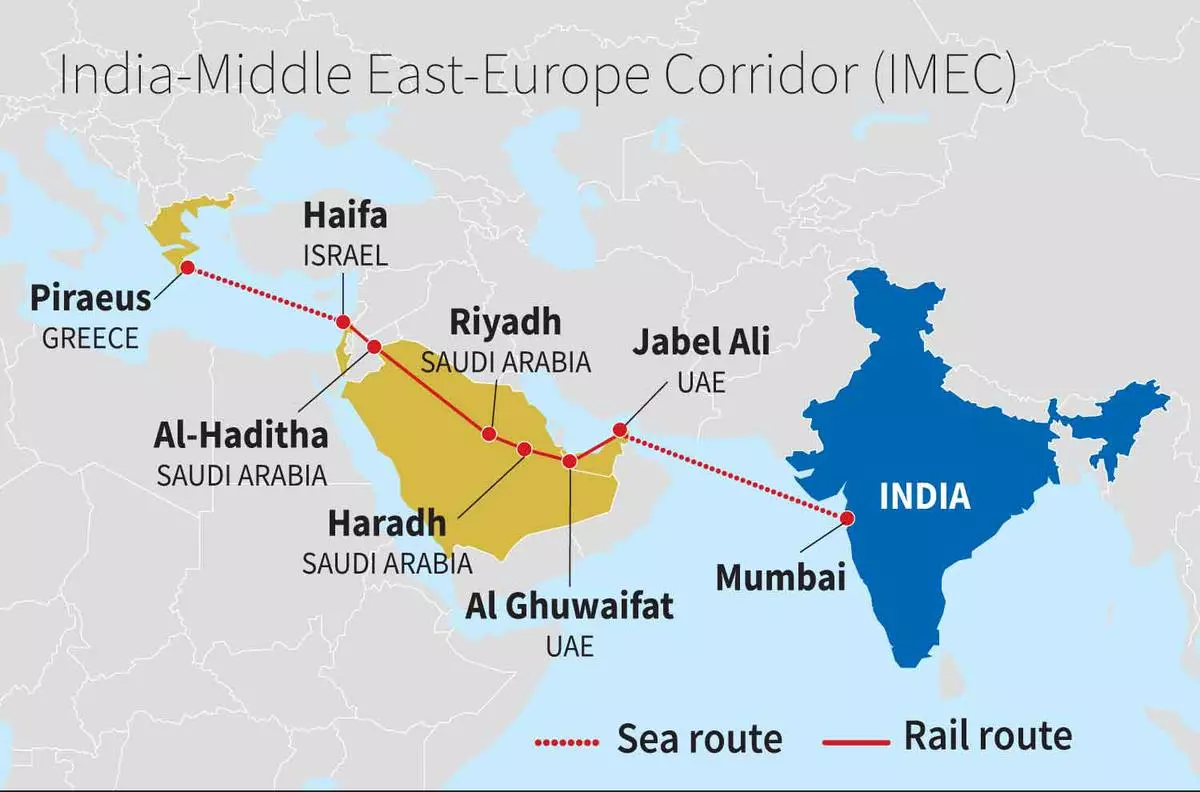Introduction to the India-Middle East Europe Corridor (IMEC)
The 6th budget under FM Nirmala Sitharaman has brought to the forefront the India-Middle East Europe Corridor (IMEC), a transformative initiative that aims to create a comprehensive transportation network, comprising rail, road, and sea routes, connecting India, the Middle East, and Europe. The corridor will consist of Railroad, Ship-to-Rail networks, and Road transport routes extending across two corridors: the East Corridor, connecting India to the Arabian Gulf, and the Northern Corridor, connecting the Gulf to Europe. The IMEC comprises of an electricity cable, a hydrogen pipeline, and a high-speed data cable.
The corridor aims to promote economic integration between Europe and India by linking important Indian ports to major ports in the Middle East and Europe, with a rail connectivity extending from Fujairah port (UAE) to Haifa port (Israel) via Saudi Arabia and Jordan. The objective of the IMEC is to enhance transportation efficiency, reduce costs, increase economic unity, generate employment, and lower Greenhouse Gas (GHG) emissions. The IMEC project is part of the Partnership for Global Infrastructure and Investment (PGII), an initiative aimed at funding infrastructure projects across developing countries through public and private investments. Signatories to the project include India, the US, Saudi Arabia, UAE, the European Union, Italy, France, and Germany.

Significance and Implications of IMEC
The IMEC was a highlight of the G20 New Delhi Leaders’ Declaration, with Prime Minister Narendra Modi envisioning it as the foundation of world trade for centuries to come. The significance of the IMEC to India is multifaceted. Firstly, it is expected to enhance trade opportunities by reducing transit times and costs, thereby facilitating increased trade connectivity with European regions. Additionally, the improved connectivity and reduced transit costs are anticipated to lead to overall industrial growth, making the movement of goods easier and more efficient. This, in turn, is expected to create employment opportunities across various sectors. Furthermore, the IMEC is seen as a counter to the debt trap of the Belt and Road Initiative (BRI), as it offers loans at standard international rates, providing relief from unsustainable debt to countries. It can serve to counterbalance China’s growing economic and political influence, strengthen ties and integration across continents and break Pakistan’s overland connectivity veto. The corridor also deepens India’s strategic engagement with the Arabian peninsula and has the potential to promote intra-regional connectivity and peace. Economically, the IMEC presents enhanced trade opportunities, stimulated industrial growth, job creation, energy security, sustainability goals and the potential for facilitating Special Economic Zones (SEZs).
The IMEC is projected to expand the addressable market for Indian manufacturers and technology start-ups, strategically reducing India’s dependency on traditional trade partners. With a fair procurement process and a strategic execution plan for market engagement, the IMEC is poised to directly impact India’s aspirations to achieve “Viksit” status by 2047. The IMEC has garnered attention on the global stage, with the G20 unveiling the plan for the corridor, positioning it as a potential rival to China’s BRI. The project has also received support from various countries and entities, including the US, the EU, Saudi Arabia, and the UAE, signifying the international significance of the corridor.


Challenges and Future of IMEC
While the IMEC holds immense potential for economic growth, regional connectivity, and energy cooperation, it also presents challenges, including conflicting interests of trade powers, potential power struggles, need to navigate complex regulatory and governance aspects, logistics and connectivity issues, missing rail links and construction, coordination among multiple countries, potential opposition and competition, and cost and financing.
More than a one-way, trade-focused transmission belt that is planned top-down, India sees IMEC as an inter-regional growth zone made of smaller, interdependent logistics hubs that form a supply chain. It represents a significant and ambitious initiative with the potential to reshape trade, connectivity, and economic integration between India, the Middle East, and Europe. As the project progresses, it will be essential to address the challenges and complexities associated with its implementation while leveraging the opportunities it presents for the participating countries and the broader global trade landscape.



